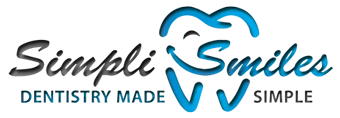Are you considering straightening your teeth but can't decide between traditional braces or Invisalign? Both options have their pros and cons, making it a tough decision to make. To help you out, we've put together a comprehensive guide comparing Invisalign vs. Braces.
Invisalign vs. Braces: The Pros and Cons
When it comes to deciding between Invisalign and braces, there are several factors to consider. Let's start with the pros and cons of each option.
Invisalign is a clear aligner tray that gradually moves your teeth into place. One major advantage is that they are virtually invisible, making them a great option for those who don't want traditional metal brackets on their teeth. They're also easy to clean since you can remove the trays before brushing and flossing.
However, Invisalign does have its limitations. It may not be suitable for more severe cases of misalignment or bite issues. The treatment time may also be longer compared to traditional braces.
On the other hand, traditional braces use metal brackets and wires to move your teeth into position. This method is effective in treating even severe cases of misalignment or bite issues. Unlike Invisalign, you don't have to worry about losing or breaking any aligners since the brackets are glued onto your teeth.
However, wearing braces can be uncomfortable at times due to friction against your cheeks and lips. You'll also need regular adjustments from an orthodontist throughout the treatment process.
Invisalign vs. Braces: Which is More Effective?
When it comes to deciding between Invisalign and braces, one of the most important factors people consider is their effectiveness. While both options are designed to straighten teeth and improve bite alignment, they do so in different ways.
Braces use brackets and wires that apply pressure to teeth over time, gradually shifting them into the desired position. This method has been used for decades with proven results.
On the other hand, Invisalign uses clear plastic aligners that fit snugly over teeth and apply precise pressure to move them into place. The aligners are changed every two weeks as your teeth shift.
While traditional braces work well for more severe cases of misalignment or bite issues, Invisalign can be just as effective for mild-to-moderate cases. In fact, recent advances in technology mean that Invisalign can now treat many complex orthodontic conditions too.
Ultimately, the effectiveness of either option depends on a number of individual factors, including age, lifestyle habits like smoking or drinking coffee/tea/soda, etc., and budget restrictions, among others - making it essential to consult an experienced orthodontist before making a decision.
Invisalign vs. Braces: Which is More Affordable?
When it comes to straightening teeth, the cost is often a major consideration. Both braces and Invisalign come with their own costs and benefits.
Braces typically cost less than Invisalign, but this can vary depending on the complexity of your case and where you live. Braces also require more frequent adjustments, which means more visits to the orthodontist.
In contrast, Invisalign tends to be pricier upfront but may save you money in the long run due to fewer office visits needed for adjustments. Additionally, some dental insurance plans now cover at least part of the cost of Invisalign treatment.
It's important to note that both braces and Invisalign are investments in your oral health that can improve your overall well-being. Therefore, it's essential not only to consider affordability but also effectiveness and convenience when choosing between the two options.
Ultimately, whether you opt for traditional braces or clear aligners like Invisalign will depend on several factors, such as budget concerns and personal preferences.
Invisalign vs. Braces: Which is More Convenient?
When it comes to convenience, Invisalign and braces have their own strengths and weaknesses. Let's take a closer look.
Firstly, Invisalign aligners are removable, which makes them more convenient when it comes to eating or brushing your teeth. With braces, you need to avoid certain foods that can damage the wires and brackets. You also need to be extra careful when brushing around the wires and brackets.
However, Invisalign aligners being removable means you need to keep track of them at all times. Losing an aligner can set back your treatment progress, and replacement costs could add up quickly.
Another factor is maintenance appointments with orthodontists. With braces, adjustments require in-office visits every 4-6 weeks for tightening or replacing any damaged components. On the other hand, patients using Invisalign only require occasional check-ups every few months since they change out their trays themselves.
Invisalign vs. Braces: The Bottom Line
After weighing the pros and cons of both Invisalign and braces, it's clear that each option has its own benefits. Braces may be more effective for severe cases of misalignment or bite issues, while Invisalign is a great option for those seeking discretion and convenience.
When it comes to cost, traditional braces are typically less expensive upfront but require more frequent visits to the orthodontist for adjustments. On the other hand, Invisalign may have a higher initial cost but requires fewer appointments throughout treatment.
In terms of convenience, Invisalign offers the ability to remove aligners when eating or brushing teeth, while braces require special care instructions such as avoiding certain foods and regular cleaning around brackets and wires.
Ultimately, the decision between Invisalign vs. braces should be made in consultation with an experienced orthodontist who can assess your individual needs and goals. Both options can lead to a beautiful smile and improved oral health – it just depends on what works best for you!
To learn more, you can get in touch with us through online consultation or by calling us, and we'll guide you further. Call (516) 336-4902 to book an appointment at our Hicksville office and (516) 756-0111 for the Farmingdale office.
